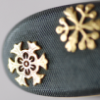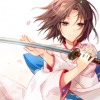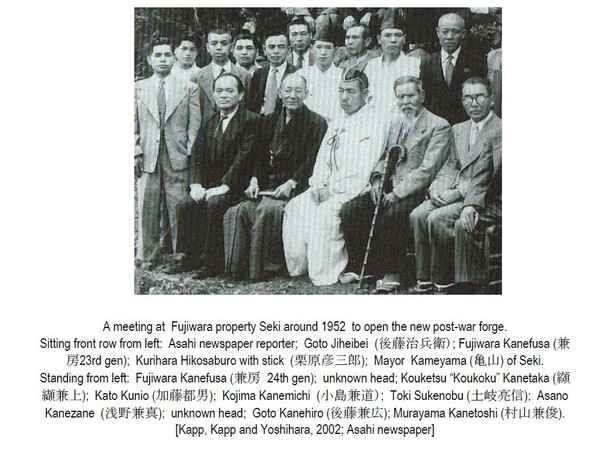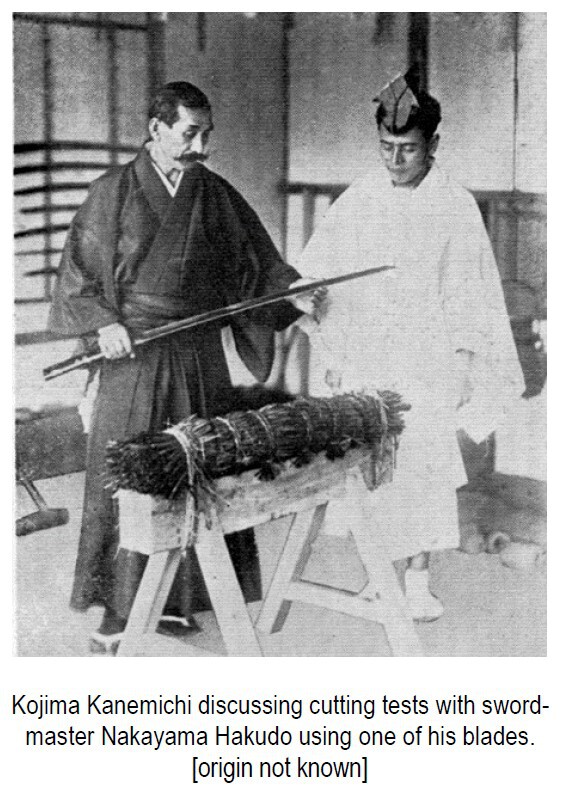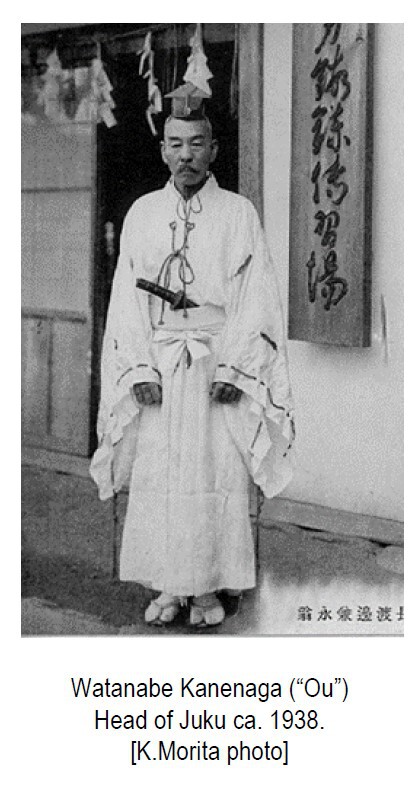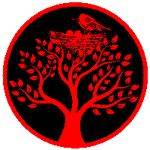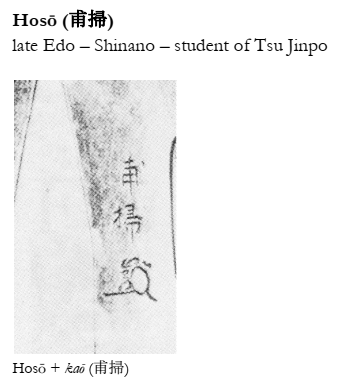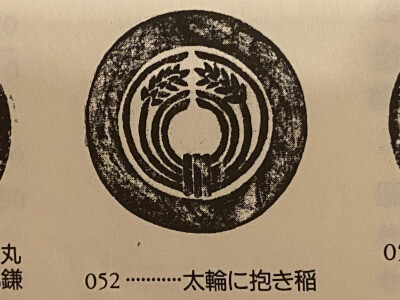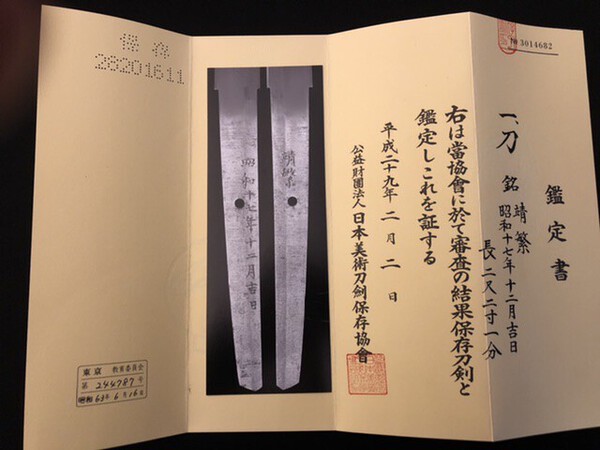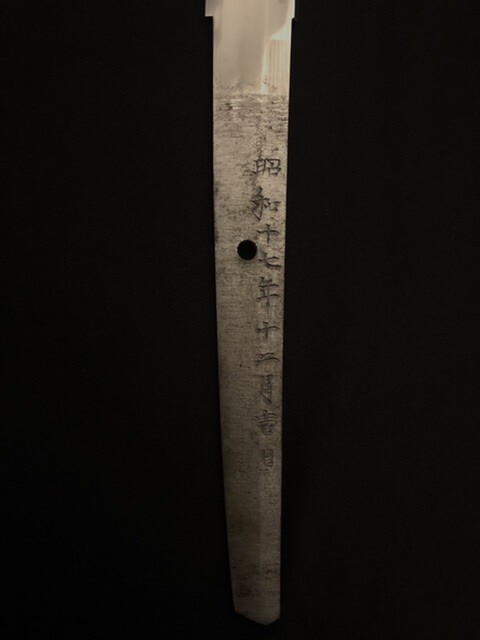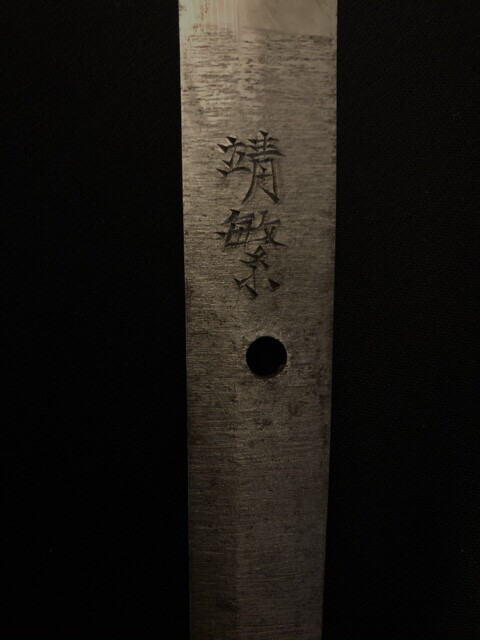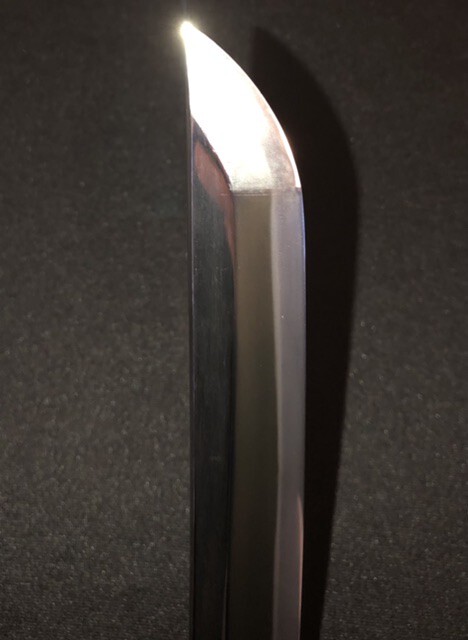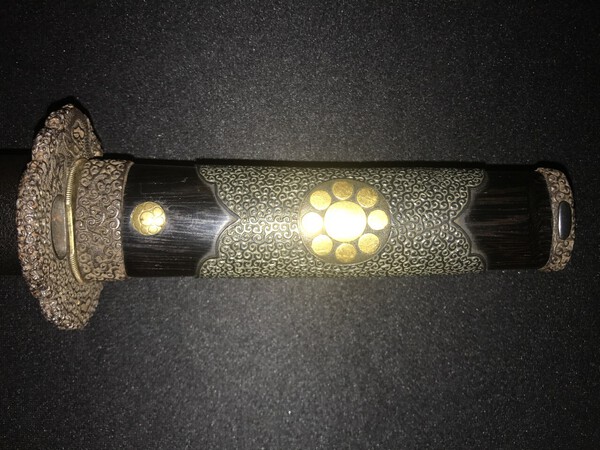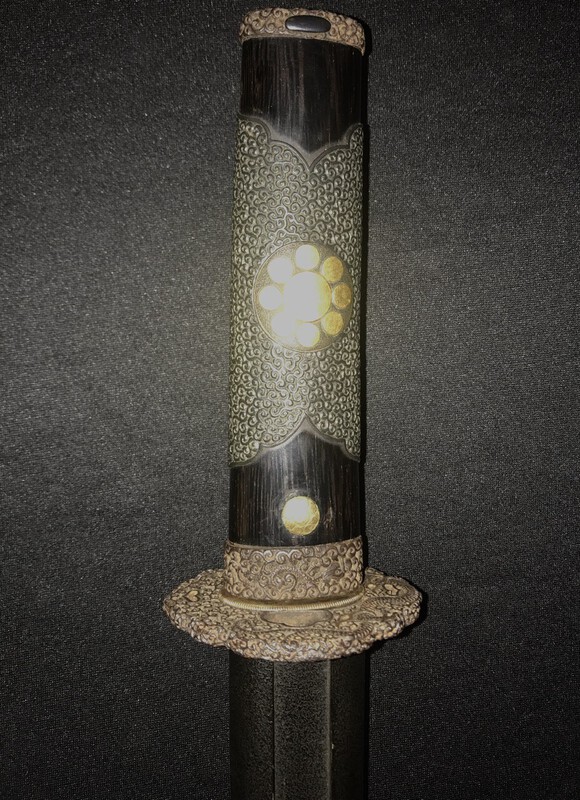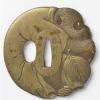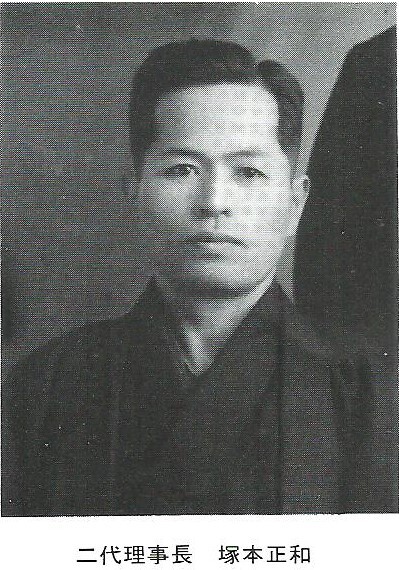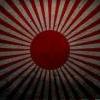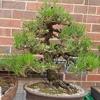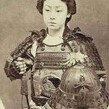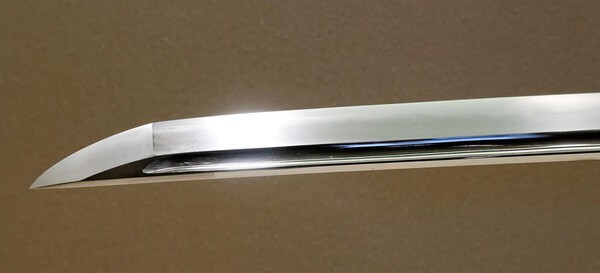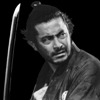Leaderboard
Popular Content
Showing content with the highest reputation on 02/13/2021 in Posts
-
I organized a scientific meeting in the early 80s, and invited a famous Japanese scientist to come to the meeting, all expenses paid. He stayed with my then wife and I at our humble home in Baltimore. He had a great time at the meeting and then a year or so later, invited me to be a visiting professor at his department and university in Sendai, Japan. My wife, two babies and I went for a 7 week trip that was spent in Sendai, with one week in Kyoto. The grant that I had gotten to cover expenses was for one million yen, and as the end of the trip was approaching, I still had the equivalent of about $1400 left, which I spent on a Edo period mumei wakizashi in mounts. I gave a series of lectures and did research in the laboratories in Sendai. I also introduced them to the Macintosh computer and showed them how to use them in their research, and they ended up buying them for the whole department. When we traveled to Kyoto, I told the ticket agents about the sword and in no time was being searched and questioned by the police. We nearly missed our flight. When we flew back to the US, I kept quiet about it and got it home safely, only to find out years later that I was supposed to submit it to the authorities and have it released. I still have the torokusho somewhere, a license that is not legal outside of Japan. I started to buy and read every book in English that I could find. Soon I discovered that there were many authentic swords to be bought in the US at bargain prices, and I became obsessed with the hunt and the thrill of the catch. I placed ads in all the newspapers, and even on those paper placemats in diners. My thrill of the hunt hasn't changed, though I went through a period of disinterest that lasted 5-10 years or so in the late 90s. It was only after my divorce that I was financially able to build a very nice collection (that's another story). I have lots of stories about chasing swords and would welcome sitting at a show with any of you that are interested over a drink and talking about our respective experiences.9 points
-
I've been into collecting militaria since I was very young. My Dad and I loved watching the old war documentaries and movies on TV (way back before cable, streaming, and on-demand). I always thought it was cool to see the Japanese officers carrying swords. Later, when I first saw "Shogun" on TV, it got me hooked on Japan and Samurai. I read every book I could find on the subject at the local library. I desparately wanted to get a "real samurai sword", but in the pre-internet era, really had no idea how to find one. My Dad and I did find a dealer at the old LA Gun Show who had a very badly rusted out, chipped-to-hell gunto blade for sale. He swore it was a 1000-year old blade, (no papers of course, not that I would've known what they were back then) and wanted something like $5000 (this is in the mid-1980's), which was obviously far, far beyond my teenager budget at the time. At that point, I basically thought they were forever out of my price range. Later I joined the Army, then after I got out, my focus turned to old milsurp firearms, circa 1865-1965. Swords were pretty much off my collecting radar for a couple decades. Slowly, I started to get interested in swords again. First by picking up some of the replica European medieval-era swords. That got me into historical western martial arts. I began learning a lot more about swords and how they were made and used. That brought me around again to katanas. Eventually, I bought a few of the better quality Chinese katanas forged out of modern steels. Figured that was as close as I could get to a real Nihonto. Then one day I came across a seller on one of the gun forums who wanted to sell a Shin-Gunto. He was an older guy getting rid of his small collection, and just wanted a couple hundred for it. For that price, I figured even if it was a fake, why not take the chance? I bought it, and it turned out to be a WW2 Showato forged in Seki. Not a Nihonto, and definately not the best condition blade by any means. But I finally had an actual Japanese katana! As I did research on it, and found some online Nihonto sites like the Japanese Sword Index and here at NMB, I realized Nihonto are actually a lot more available outside of Japan than I'd ever thought. I picked up a couple books, and started looking around and doing as much research as I could, bought some more blades, both Nihonto and Arsenal made....and, hey, here I am. With a new addiction. And quite happy with it.5 points
-
4 points
-
Here is a student of Soten - I think there is a qualitative difference between this and the example from the OP (and the many examples that come up). I am not sure many people have seen a real Soten. The airy-ness of the piece, the quality of the plate, the very fine detail all need to be seen, masterworks stand out and the many copies do not compare... -t https://www.nihonto.com/juyo-tsuba-by-nomura-kanenori-野村包教/3 points
-
I know I've responded to this question many years ago, but I can't find a copy of that answer, so I'll just go with a Cliff's Notes version here. Back in the '80s I had no interest in nihonto, but did have an interest in firearms, and so every once in a while I would buy a copy of Shotgun News off the news stand. This was an oversize pulp paper publication of a few hundred pages, about a quarter of an inch thick, with both commercial and private ads for all types of firearms and related parts and accouterments. The front page, which consisted of about four columns of regular print, was of course where the highest cost ads appeared. There was one ad that always appeared, taking about three inches or so of column height and therefore relatively expensive for the author. It was titled "WANTED - Japanese SWORDS" and had a bit of description and contact information. But what was remarkable was the following that composed most of the ad length: Japanese Swords Japanese Swords Japanese Swords Japanese Swords Japanese Swords Japanese Swords Japanese Swords Japanese Swords Japanses Swords Japanese Swords Japanese Swords Japanese Swords (Edit Note: The above was actually in all caps, but this site's auto-edit will not let me write Japanese in all caps!) Notice the intentional mis-spelling in one of the lines that was likely intended to catch readers' eyes. It was obvious that there was some decent value in such swords for the author to run this same ad in all the issues (3 times a month), but I just passed it off as a quirk not worth investigating. In the late '80s I was involved in an expansion in my company and so was taking a number of cross country flights. On one such journey, I was waiting in a terminal, I think in Phoenix, for my flight back home but not positive of this location. In this terminal there were a hand full of white and plexiglass kiosks, displaying nihonto. I'd never seen such before, and was amazed at the metallurgy, particularly the hamon, of course. I had no idea that swords could be so complex and, well, fascinating, but this still wasn't enough to kick me into gear. A few years later, in 1994, I was on another trip, this time to Dallas, Texas. Having a break at lunch time, I looked up and went to a militaria shop there. The shop had three or four gunto, mostly beat as I remember and in no way comparable to what I'd seen earlier in the airport terminal. Then I came across what was described as a kamikaze tanto, a new concept to me. The shop proprietor, responding to my apparent interest, showed me a book that described the item, Military Swords of Japan, 1868 - 1945, Fuller & Gregory. Being a total newbie, I remember wondering whether this tanto could be a fake, though having no real knowledge of any degree of such in this field. I convinced myself that the tanto was likely good, comparing it to the info in the book and observing the quality of the mount, the bone trim, and the apparent age related wear, and so I bought both the tanto ($250) and the book. The hook was set! Well, it turned out to be a real kamikaze tanto, but not a real nihonto, as it has a mill steel blade, though with a real hamon (perhaps oil quenched). It was unfortunately quite a while before I got clued into good info sources such as the JSSUS and the Robert Cole web site. I remember reading sales sheets from "the R guy" in Pittsburgh and trying to translate the Japanese sword terms into their English counterparts. I think I got about half of the usual terms before I finally found a nihonto dictionary. So that was the start, followed by numerous subsequent hits and misses. I still have the tanto.3 points
-
School is Chinese Grammar school.....Not a TSUBA but a cheap decoration item.2 points
-
2 points
-
2 points
-
2 points
-
2 points
-
It was in a town in the American southwest many, many, years ago, my parents owned a 15 acre place a few miles outside the town. The house had a utility room toward the back area which also contained a small closet. It was a rather dark room, with a window which allowed early morning sunlight to stream though depending on the position of the curtains. I don't recall my father (not yet 10 yrs home from serving in the 11th airborne during WWll ) bringing me into the utility room. All I remember (as if it were yesterday) standing there as my Dad reached in to the closet, retrieved and showing me what I now know was a late war TALW bayonet. I may have been 4 or 5 yrs old at the time, but remember thinking, Ok, that's great but not really all that impressive. The next item (much better) was a excellent condition Army parade saber with a General officers Tassel dangling from the handle, don't have a clue as to why the tassel was on the Type 19, even to this day. Next was a small wakizashi mounted in a rather beat up, stained shirasaya , again ok, but nothing to get too excited about. Finally, out came a Shin-Gunto , it was stunning, as my father withdrew the sword from the sheath, the early morning sunlight, through the partially opened curtains, danced up and down the pristine polished blade as sunlight across shimmering water. It was mesmerizing, what exactly (in my 5 yr old mind) type device is this. Long extended handle beautifully wrapped, ornate fittings, something captured me at that moment, and has stayed with me my entire life... The Shin-Gunto my father showed all those years ago was obviously not what could be considered my first sword, however it was an experience which led me to a life long enthusiasm for Japanese swords. Dave M2 points
-
I kept my first sword for 15 years, a shingunto with a worn out Koto blade. The fittings were stamped with number 2 and the blade would have been good in its ubu state. I sold it to afford a high-class Shinto blade in a Shingunto koshirae. That sword immediately showed me what a first class blade should look like and most of my collection at that time went because the dross had fallen from my eyes. I like John's phrase "... it will be interesting in 30 years time to see where it began and how well I've done since then!" If the occasion warrants I sometimes ask a beginning collector "Where would you like to be in 5 years time?" Its good to measure one's progress even if money is tight in one's life circumstances. BaZZa.2 points
-
I grew up with a few blades at home (nothing a discerning collector would be excited about) plus there was a very good exhibit of medieval European arms and armor closeby, which impressed me greatly. However, I suspected the European subject to be relatively well understood, and thus with somewhat limited excitement or opportunity to come up with something new and instinctively went into a different direction. It was a difficult trip nevertheless, but one thing I am still amazed about is how much of everything I got to see along the way. For some reason passion, history, money, art, politics and much else converged on the path. I've seen the humanity at its basic worst, but met a few talented people who taught me a lot in fields that have nothing to do with swords. Dozens of emails sent over many years spent trying to get inside some prestigious museum only to find out it only owns garbage, while having a friend who would bring out dozens of Durers anytime I visited. Death sentence in one country, a personal conflict with a leading terrorist in another one, protection offered by terrorists in the third one. And all of that because of a few blades!!! Who would have thought.2 points
-
I will always keep my first two swords (Nihonto & Shin Gunto), they aren't anything special but I figure it will be interesting in 30 years time to see where it began and how well I've done since then!2 points
-
Swords had never been on my radar screen until my dad died, back in 2014. He had been in the Marines after Korea, and picked up a sword (likely playing poker). It was missing several parts. So, I started searching the web for the parts, and to get the mei translated. It turned out to be a 1941 Mantetsu Koa Isshin. I wound up reading a lot and found out "gee, there were Navy swords too! And NCO swords, too!" and off to the races I went. My collecting goal was to get a good representation of all the official WWII types and standard variations. That's done now, and I've wondered where my hobby time should take me. It took me into the Mantetsu study and Stamp collecting, and digging/detective work in general. I went to the AF crash investigation school in my Air Force days, and enjoyed the detective work it involved. I've found the same joy in chasing down the mysteries we've been exploring here at NMB. I'm nowhere near the skilled researcher like Thomas or Mal, but I enjoy the chase all the same.2 points
-
1 antique Japanese WW2 Yasukuni Shrine sword by Yasushige available. This fine antique Japanese Yasukunito sword would make an important acquisition for any collection. The blade measures 66.8 cm (26 5/16") from blade tip to notch in the blade spine. This sword is mounted in shirasaya. There are no longer any army mounts with this sword. This Yasukunito sword has NBTHK papers already—a nearly $1000 cost (when sent from the U.S. to Japan), and a many months-long process. Condition: This fine Yasukuni Shrine sword is in original, very fine WW2 polish. There are no nicks, and there is no pitting of any kind. In fact, the blade only has a very occasional micro finish scratch. The blade needs no polish, which is a significant savings in time and money as well. $6500 obo1 point
-
Very fine gold and shakudo Hosakawa motif tanto koshirae available. This koshirae has a elaborate matching Namban iron fuchi, kashira, and tsuba. The finely carved shakudo handle wrap is of the same matching design. The Hosakawa menuki are fine shakudo and gold. The fuchi, kashira, and tanto each have a dragon in their intricate carving. This koshirae holds a 9” to 12” tanto blade. CONDITION: This rare koshirae is in exceptional condition. $24001 point
-
I felt that every black belt should have a katana. In 1976, I bought my first blade a WWII army blade. I went to the library and read every book they had on Japanese swords. Next step was the main library, and inter-library loan. I ended up reading all available books on the topic, in my city, my province, country and some from as far away as Japan. I purchased my second sword a Koto O tanto that was three times as much as my first sword. (I still have both blades.) I learned that there was something called the JSSUS - Japanese Sword Society of the United States. I joined and now am a Director/Ombudsman for the JSSUS. I joined other sword study groups and continued my studies. Every new book that Harry Watson translated was a treasure that people waited for... Please tell us your story. This thread was started because of the thread started by Adam aka waljamada on his project to make a Video for beginners.1 point
-
1 point
-
1 point
-
1 point
-
Yuge news indeed! May I ask what specific information led you to that conclusion, Thomas? The sword I remember seeing with the Java mei have been found in copied Type 98 mounts.1 point
-
How are we (or you) going to formally document all the discoveries you're making Thomas?!?! This is YUGE news! I a definite step in identifying these swords.1 point
-
I have been able to tentatively identify these swords as made in Indonesia, formally Dutch East Indies, during the 1943 to 1945 time frame by the Japanese army. The Japanese Army established an arsenal at Bandung バンドン, Java, in October 1943. I think this arsenal is probably the source for these swords. If not the actual source, then the arsenal supervised the production of them. The British landed on the island after the war and that is why they are showing up in the United Kingdom on a consistent basis.1 point
-
1 point
-
You are correct Bazza! It reminds me of the joke about a scientist who used condoms for an experiment he was performing in the lab. He went to the druggist on friday and bought a gross of condoms for his research that weekend. The next friday he went in to buy more for the coming weekend and told the pharmacist that the last gross he bought had only 142 condoms. To which, the druggist said, "Gee, I hope it didn't spoil your weekend"1 point
-
https://studyingjapaneseswords.com/2019/02/20/12-5-part-2-ikubi-kissaki-continued/ This is chapter 45 of my website "studyingjapanesesword.com". I changed the photos of Kunimune of this chapter. Please click the link above. I have been working to create my website into a book. Photos were changed here and there. Here is one. Thank you Yurie1 point
-
1 point
-
The thread we have been having on osoraku-blades got me thinking about ways that Japanese (and I suppose other) craftspeople have made use of damaged, incomplete or otherwise compromised weapons, armor, and other related gear. Actually, I thought about this situation right after I hit the “send” button on a note to that thread and went over to see what was being provided on Ebay. There I saw a ‘kayakuire’ (call it a powder flask) that looked suspiciously like it was made of a pair of old lacquer sake cups with the bases removed and the rims glued together. That got me thinking about other re-purposed and re-used samurai gear and I thought of some other items that fit that description. Think of all those nice old kozuka that became fork handles. My personal feeling is that lots of the brass embellished tsuba of the early Edo period were Muromachi-age plane-janes that got “tarted up” after peace broke out. If that happened in early Edo times, just look at what happened in the Meiji era. The line between menuki and tobacco pouch ornaments seems suspicious. I recall seeing inro made of armor pieces. And the heavily repouse’d iron fittings on Sendai tansu cabinets really look like old armor elements. I have seen a couple of mekugi-nuki that were made of old sword nakago, in fact I carry one myself. I am also really interested in all those nice old matchlocks that got “modernized” with percussion cap locks or even bolt actions. What should we think about such items? Are they “fakes” and misrepresentations? Should be hate them or at least avoid them? Is ubu aways better? Or are these sorts of things normal residues of sword use and artistry? Peter1 point
-
I start a group 3 weeks ago on Facebook for fans of Nihonto in Canada Dedicated To The Preservation And Promotion of Japanese Swords, Swordsmiths, And Related Crafts Nihonto Canada Discussion/Trade Sword/Fittings/Armor(NIHONTO) Anyone who wants to talk about Nihonto are welcome No Martiel Arts or any other kind of sword will be allowed. I created this page to regroup Canadians who love Nihonto Arts. Dissusion and being able to sell / buy items in Canada ENJOY Nihonto Canada (Preservation And Promotion Of Nihonto) | Facebook1 point
-
I have a 3 swords I have acquired though a friend a few years ago. I was trying to find a polisher or an appraiser in Sydney. Does anyone know of any ? tony1 point
-
Prime example, after the sword ban the makers of sageo producing obijime instead. https://kimono-kimono.de/obijime-an-introduction-to-the-different-types/ BTW if you want a nice sageo without breaking the bank, look at obijime on ebay or kimono sales sites.1 point
-
Greetings from Sydney, Australia About 4 years ago I bought 3 swords from a friend who was moving back to Canada, I put them into my brother's garage, and quickly forgot them. Now, my brother is selling his house and I have "rediscovered" my treasures. I found this forum and it seems that i have so much reading and learning to do. Hopefully, one day I can contribute. I'm going to post pics of the "cleanest" sword soon.1 point
-
Hi, My first sword was obtained about 30 years ago it was obtained from a local junk shop ww2 mounts and combat cover well out of polish and was not a looker ,knew even less in those days than I do now think I made a mistake in getting rid of it as it had a flat mune something that I had no idea of at the time but something that I have not seen since did I part with something good I will never know, the next was a mid war example that I sold years ago. Mark1 point
-
I was a knight fan and grow up with old medieval movies with Errol Flynn and other Stars of the time. We had only a black and white TV in the 70's. And on weekends after the muppet show on saturday some 50s and 60s movie came on TV. My friends loved Winnetou but i was this knights guy and wished nothing more than a knight sword. As i was 10 my uncle gave me a rusty "knight" sword. It was one of these deco swords from the "Neckerman" catalogue. I was so happy. And i was sure this was a real one. The years gone by and with my first earned money after school i bought a saber from the french- german war. And so i came into the collectors hobby of blanc weapons. I lived in a small village with no antique shops and no public interest in antiques. So my interest was gone over the years. I sold all my stuff. And as ebay starts in the 90s i saw this beauty. and bought it not knowing what it is. I thought it must be very valuable with all that gold and silver. The blade was in bad condition but my experience from european swords was that this is patina and a sign of value and provenance. I really had no clue of Japanese weapons (ok nothing changed in that). But my love was awakened. And i start with the book " the samurai sword" my only book over a long time. I bought over the years many "gunto". All of this swords were mass produced. No star stamp, nothing important. I bought and sold the swords and collected Tsuba because i liked the motifs. But my knowledge didn't rise. In 2015 - i think i came to the NMB. This was a catalyst for me. For more interest and more knowledge in Japanese swords. So I'm a youngtimer in these hobby and i hope i get old to see and learn more. Btw i sold my first sword the kai gunto several years ago for a very less price. Sometimes i think i should had keep it. My last 50 cent on the story is, that today it is all more easy. You get in 5 minutes much more information than in the times before the internet. Now it is not important where you live and which friends you have. If you are interest in something you get the informations you need. Knowledge is so important in these hobby.1 point
-
I was a collector from my early teen years and haunted the local antique and junk shops, not a huge difference in those days in that town, except for one. Manser's which was a classic dusty, packed, antique shop in Castle Gates Shrewsbury full of all sorts, mirrors, old furniture small sculptures, swords and guns. Thinking back my actual first real sword was a knackered wakizashi sans tsuka or any metal mounts except blade and habaki in a same and wood saya. It cost me £4. 10 shillings, and this keyboard does not even have a shilling symbol. Pre-internet, all my research done at the library, which fortunately was a good one because Shrewsbury is a county town and admin centre for a larger area. I was about 12, and oh dear how I abused that blade by current standards. I swapped it for some armour when I was in my twenties, which is just as well in some ways. I have to give Mr Manser and all those other dealers a lot of credit for their time and patience which they never begrudged. Just to give you a taste of the place, this is a photo of No 1, Castle Gates, Shrewsbury, F C Manser & Son (Gordon Manser).where I spent hours antique hunting and learning. I think this was his second shop, across the road from that first shop and where I bought an 1822/45 infantry officers sword from him, my second sword ever. (Unable to locate a pic of that first shop, it might have been demolished).1 point
-
I was in my 30s working as an engineer. One of my hobbies was blacksmithing at the time and I was deep in the study of ferrous metallurgy at the time. One day a friend said he knew someone who was selling a Japanese sword and wondered if I was interested because of my interest in blacksmithing. It was just $10 so I told him I would take it. I was stunned the next day with what I saw in the metallurgy of this blade. It was obviously very old and made with enormous skill. It was all I could do to hide my excitement and close the deal. I spent the next six years studying this blade by buying books, going to a few sword shows, and enlisting the help of Paul Allman and Dean Hartley. The first collector I showed it to in Georgia told me nothing about it but managed to make an offer of $11,000. When he pulled it from the saya his voice was crackled and his hands started to tremble. That told me more than his words could have. When I was finally sure of what the sword was I decided to have it polished and submitted for shinsa. The first shinsa before polish was by Kotoken Kajihara at a show in Birmingham , Alabama. He attributed it to the first generation Moriie. The NBTHK shinsa after polish left it with Juyo papers and an attribution to the Ichimonji school of the early to mid kamakura period. I still have the tachi and I have been hooked on Nihonto ever since. It’s hard to build a big collection after starting out so well. The blades I like are too expensive so I have spent more on books. I will leave a few nice polished blades and a lot of books when I’m gone for the next generation.1 point
-
I feel like I had always known about Japan, which is odd for a kid from Wisconsin. I grew up with my Grandparents living in a Wisconsin town that was also home to a Kikkoman factory. Japanese companies, as they do, keep as much as possible in house. All management and executives were Japanese with the factory workers being a make up of mostly local Wisconsinites. Due to this Japanese families were provided homes in the area to live during their usually 3 to 5 year stints at this factory. Furthermore my grandfather had been stationed on the U.S.S Intrepid during WW2 and due to this experience and his desire to move on/heal from the war he took a trip to Japan. He went as a tourist along with his wife (my grandmother) with an open mind and heart. He absolutely loved his time there and brought back statues of Samurai, geisha, a couple paintings and random bits and bobs decorating the house. This brings me to my childhood among the statues, bits and bobs and the Japanese families in the neighborhood. I met two brothers from Japan whom I became close friends with spending summers playing together. I sampled some of their mothers cooking, saw their cooler than ours transforming robot toys and his father's small collection of Japanese Swords he had purchased here in America. I noticed them...thought about them...then moved on, but it had parked in the back of my young brain. I grew older and discovered I could study abroad. Japan it was, my University just happened to have a partnership with JoChi University in Tokyo, where I ended up transferring and then graduating. I lived in Tokyo for 7 and a half years during which I visited their museums, went into a few antique and sword shops just browsing. Still never had a desire to own a katana of my own but I was soaking up the experiences as I went along. I moved back to America and another 7 and a half years later, without a single thought of katanas, I saw a WW2 parade sword at an antique mall. In that single instant an unavoidable desire burst forth in me to own an authentic antique Japanese sword. One would be mine. I have a powerful collector's gene. I scoured ebay, did some research and then found a seller with a bunch of swords in a nearby city. I contacted him and the next day I was at his War Relics shop. He brought out perhaps 6 or 7 swords and gave me a run down of why they were all in the 2 to 3k range and my hope balloon was slashed by the pricey blades. He then says, "You know what, there's one in back I was going to sell on ebay. Might be perfect for you." He brought out an early type 98 with 27" nagasa, punched tsuba, cat scratch habaki, shinto mumei with some rust on the top portion of the blade. Besides that bit-o-rust it was beautiful. I could feel the history, it smelled of age and had a whisper of old necessity now outdated. It felt important but stoic in its relegation to an artifact. A noble acceptance recognized in age of one well lived who knows its time has passed. Made me want to love it even more. He gave me a good price and I paid in cash to avoid paying tax. Told myself, "I only need to own one". That was a lie. I still though think to how that first sword made me feel. My childhood friends, my grandfather...all the people I met in the US and Tokyo. This sword was important, this sword meant something and still is and does. Just in a different way. War, battle, old ways...each sword belonged to a someone. One sword for one human. Held with intent and by someone who didn't want to lose it; lose their ability to fight, to live. This was important. This meant something. Now it means something to me. I want to learn more.1 point
-
As a kid I started collecting WWII stuff; family medals, bayonets and so forth. A low point was a collection of lumps of concrete I managed to get off the pill boxes that lined the coast here in Cornwall. (Even lower was the live cannon round I found on the beach art Arromanche but that is another story). A local antique dealer, Peter Watts, used to let me look around his shop and every once in a while I would have enough pocket money to buy a bayonet or something. Fascinated by antique guns, one day in Peter's shop I saw a wheel lock rifle, sans lock and went home raving about it, way out of my price range. My Mum went down and bought it for me for Christmas but not wanting me to find it asked Peter to hang onto it. A day later the police turned up and told him that a local collector had been robbed and the gun was part of the haul, of course he returned it and when my Mum went in to collect it told her the tale and said, "Why don't you have this instead, you can have it fir the deposit you payed on the gun." It turned out to be a katana, damaged in combat and remounted as a Burmese dha. I was fourteen at the time and there was nothing available in terms of books, the best computer was literally hand cranked and so one or two general books on sword collecting until at college I came across Stone's Glossary and the reprint of Sword and Same, did a written study on The Japanese Sword, including building a small tatara in the garden and forging some metal.. It got me my degree and I started work as a teacher in another town. Cycling past an antique shop I saw a katana in the window and had to stop for a look. Stunning! Big katana in good mounts. Pulled the blade out a little and the sticker on the blade said £30. Automatic reaction I asked what they could do on it and it came down to £28. It is still the only time I have ever gone overdrawn but I bought it and cycled home with it. I still have both swords. All the best.1 point
-
My first must have been around 2000, probably a little earlier. It was a Seki, unsigned blade remounted in civilian koshirae. I bought it from one of my student’s father who had bought it around the late 1970s. Previously, I’d read what I could find about sword. That was the beginnings of the Internet, so what I had was a photocopy of yumoto's, a few magazines, and two or three webpages, namely Jim Kurrash's and Roger Stein's and the first incarnation of Aoi. I even contacted them to buy a sword, but giving my credit card number to people at the other end of the world, that could only speak a few words of English sobered me. Then, as the web developed, I found more web sites and read as much as I could. I even discovered NMB at its earliest, was tempted to register then forgot about as my knowledge was so poor in comparison I felt useless. Years passed, I read more, bought books from Amazon, went through moments of hype and despair at my slow progress, bought a sword, my first real Nihonto (the one that is being polished at the moment), read even more, bought some Chinese repros because they were affordable, became fluent in Chinese repros until I was fed up, turned myself again towards the real McCoy, bought one or two swords and read again. ...until it became clear I had crashed into the wall of knowledge and needed something new. So, this forum, where I’d lurked for years became the answer. Still far behind and frustrated knowledge wise but found people I like, new horizons (WW2 swords), focused my collection on what I really want, bought more books and finally came to terms with the notion I’ll never progress as much as I’d like.1 point
-
Aside from the chip, there are signs of some nice work there. I am the type that would take a chance on it. If you get it cheap, it may be worth checking out. Especially if that oil is there since the war.1 point
-
Yes , John and Kristie are Good Guys ! Easy to deal with , but also Very Professional and helpful Also able to organise polishing , shinsa , having koshirae made etc.. services through his direct contacts in Japan , while my blades were in Japan Totally recommend Nihonto Australia 🇦🇺😁👍 Cheers , Alan1 point
-
Im still blowed away by the one you posted on Nov 15. Amazed the nakago was spared.1 point
-
The cat is saying: « i don’t trust anymore anyone » « Last time a vet gave me a shot for a vaccine, when I woke up someone had stolen my balls »0 points

